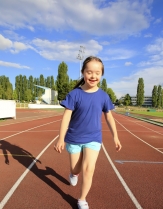Tips for Inclusive Programs for Persons with Disabilities
Monday, December 3, 2018 - 08:00

December 3, 2018 is International Day of Persons with Disabilities. This year’s theme is “Empowering People with Disabilities and Ensuring Inclusiveness and Equality”. Here in Canada, we have reason to celebrate. The Honourable Carla Qualtrough, Minister of Public Services and Procurement and Accessibility, is shepherding Bill C-81, the Accessible Canada Act, through its parliamentary process. The Bill was adopted by the House of Commons on November 27th and is expected to reach Royal Assent by the spring of 2019. The Accessible Canada Act will bring us one step closer to a barrier-free Canada.
Fourteen percent of the Canadian population report having a disability. With our aging population, this number is expected to rise rapidly over the next 20 years. This is simply too big of a number of people to ignore. As sport and recreation leaders, we have to find ways to be inclusive.
Providing a welcoming and inclusive program is of benefit to everyone involved:
- Participation in sport and physical activity has physical, mental and social benefits for persons with disabilities;
- Creating inclusive programs teaches leaders to be creative with their coaching style; and
- Participating in inclusive programs teaches all athletes respect and the value of inclusion.
For coaches, program leaders and decision makers committed to making programs more inclusive, here are five tips:
1. Get information – Talk to key stakeholders about different types of disabilities, and how to ensure an inclusive environment. Examine facilities and programs to identify and address barriers to participation. Provide training for all staff about providing inclusive programs and services.
2. Create partnerships – Reach out to organizations that serve individuals with disabilities to increase your organization’s capacity, and to tap into their networks to promote available programs.
3. Implement an athlete-centred approach – Some people with disabilities may not require any support or modifications to participate in sport and physical activity; others may require significant support. Talk to participants and their parents/guardians, if appropriate, about how to ensure a safe and successful sport and physical activity experience.
4. Create proactive promotion – Promote your program as one that is welcoming for all. Ensure promotional materials include pictures of people with disabilities fully participating.
5. Evaluate – Set goals and evaluate your progress. Consult with stakeholders and individual athletes to adjust strategies and approaches.
Recommended Resources
About the Author
Jane Arkell is Executive Director of the Active Living Alliance for Canadians with a Disability. She has been asked to sit on many committees to represent the area of health promotion for individuals. In addition, she is currently helping to shape Bill C-81, the Accessible Canada Act.
The Active Living Alliance for Canadians with a Disability is a national network dedicated to inspiring individuals to engage in sport and recreation. The Alliance also assists organizations and communities in being welcoming and inclusive for participants with a disability. To learn more or to become a member visit www.ala.ca. Members can share their inclusion resources on the ALACD website, network with other like-minded organizations across Canada, and have access to a variety of training programs and resources, including Moving to Inclusion (a 2-hour training program that covers the essentials of providing inclusive environments, programs and services) and All Abilities Welcome (a practical resource about creating an inclusive environment).